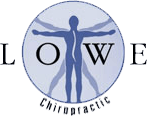Chiropractic FAQs
Affordable Pricing
Customized Treatment Plans
State-of-the-Art Equipment
Hours:
Explore How You Can Benefit From Chiropractic at Lowe Chiropractic
Even though chiropractors are becoming a greater part of mainstream medical care, we understand that you might have some questions. Read some of our answers to typical questions we receive from patients in our area. If you have more questions, please don't hesitate to
call.
Read our FAQs
- What is chiropractic?
Chiropractic is based on the premise that with a normally functioning spine and nerves, the body is better able to heal itself. Chiropractic treats the cause of physical problems – not just the symptoms. The purpose of care is to restore and maintain the health of the whole person and not just to treat the isolated symptom.
- Can chiropractic help me?
Our doctors will look at your overall health, focusing not only on your area of complaint but on your lifestyle as well. This integrated approach helps to determine the best possible treatment for your individual condition. The goal of care is to achieve not only pain relief from your condition, but to restore and maintain optimal function and well-being.
- Is chiropractic painful?
No. The first objective is always relief from pain. Once this is achieved, restoring function (the ability to perform every day and work activities) is the next objective. Improving function is the key to long term pain relief.
- Do I need to see my M.D. first?
No. Our doctors will perform a detailed history and physical exam to determine your diagnosis and individualized treatment plan. Whenever necessary, we will consult other medical specialists about your condition. Our training as chiropractors includes:
• 4-year undergraduate degrees in science
• An additional 4 years of training to receive our Doctor of Chiropractic degree
• Not to mention our decades of actual practice
- What if I don't have insurance?
That's ok. We offer affordable cash/self-pay fees that allow our patients access to the care they require. An initial consultation and examination is offered at $55 and if x-rays are necessary, those are offered at $59. Subsequent office visits can range between $25 and $50 per visit, depending on the type of treatment provided.
- Can chiropractic help children and pregnant women?Describe the item or answer the question so that site visitors who are interested get more information. You can emphasize this text with bullets, italics or bold, and add links.
- Can chiropractic help older patients with arthritis?
Yes. As we age, quality of life – vitality, strength, endurance, and balance is essential. Years of stress or overuse can cause your spine to degenerate or wear out. We are trained in treating these degenerative conditions to improve the health of your spine by restoring motion and nutrition to joints. Joints that have good motion are not painful, perform better, and are less likely to be injured or degenerate.
- What is an adjustment?
Chiropractors use controlled forces called “adjustments” when there are restrictions around joints the body cannot overcome itself. Such barriers include muscle spasms, swelling, scar tissue, and pain. The controlled force of adjustment safely generates the energy needed to overcome such restrictions and move a joint back to its normal full range of motion. Other therapies are often incorporated with the adjustment, such as ultrasound, electrical muscle stimulation, low level (cold) laser, heat and cold packs, and traction.


Share On: